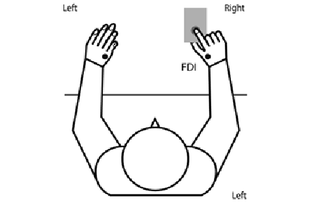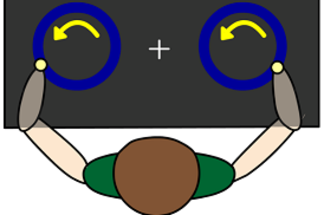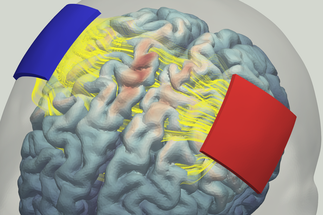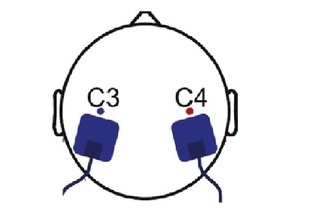Neurorehabilitation & Motor Plasticity
The human brain is capable of changing its function and structure in response to extrinsic or intrinsic stimuli. This capability of neuroplastic change represents the neurobiological basis for learning new skills or to aid recovery of loss of function in the presence of neurological diseases. The overarching question of our research is: may neuroplastic processes be harnessed for the recovery of sensorimotor function in neurological diseases?
In a translational setting we investigate basic neuroplastic mechanisms of sensorimotor functions in healthy subjects and their modulation in the presence of brain diseases such as stroke or Parkinson’s disease. Different training- and learning interventions are being used and their effect characterized using non-invasive brain imaging techniques (Functional and structural MRI, EEG). We particularly focus on the investigation of neurophysiological mechanisms underlying neuroplasticity-inducing non-invasive brain stimulation techniques such as transcranial direct current stimulation (tDCS) or transcranial alternating current stimulation (tACS). To do this we use neuroimaging and brain stimulation techniques both separately and in combination (tDCS – fMRI; tACS – fMRI).
We collaborate closely with the Day Clinic of Cognitive Neurology at the University of Leipzig and its Outpatient Clinic for Stroke Rehabilitation . To assess the clinical impairment of individual patients we use a comprehensive neuropsychological and sensorimotor test battery, as well as a robot-assisted assessment of upper extremity sensorimotor function using an exoskeleton robotic device.
Mirror motor activity is a phenomenon that occurs during unilateral contractions in the contralateral “resting” limb.
[more]
Coordinating both limbs in a meaningful way is essential for most of our daily tasks. Previous studies have shown performance differences between two fundamental bimanual movement patterns
[more]
This project addresses the computational simulation and modeling of transcranial direct current stimualtion (tDCS) with the overall aim of the prediction of the stimulation effect.
[more]
In this project, we adapt transcranial alternating current stimulation to endogenous somatosensory mu-alpha oscillations.
[more]
Patients with sensorimotor deficits in the chronic phase after stroke exhibit a number of marked changes in brain physiology and structure. In recent years, various non-invasive brain stimulation techniques have been developed, potentially allowing a modulation of brain plasticity processes.
[more]
Investigating organised neuroplasticity in BCI based stroke rehabilitation
[more]



